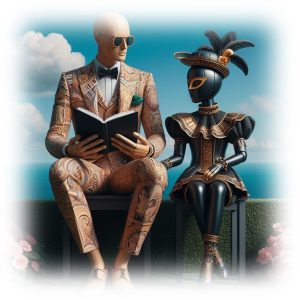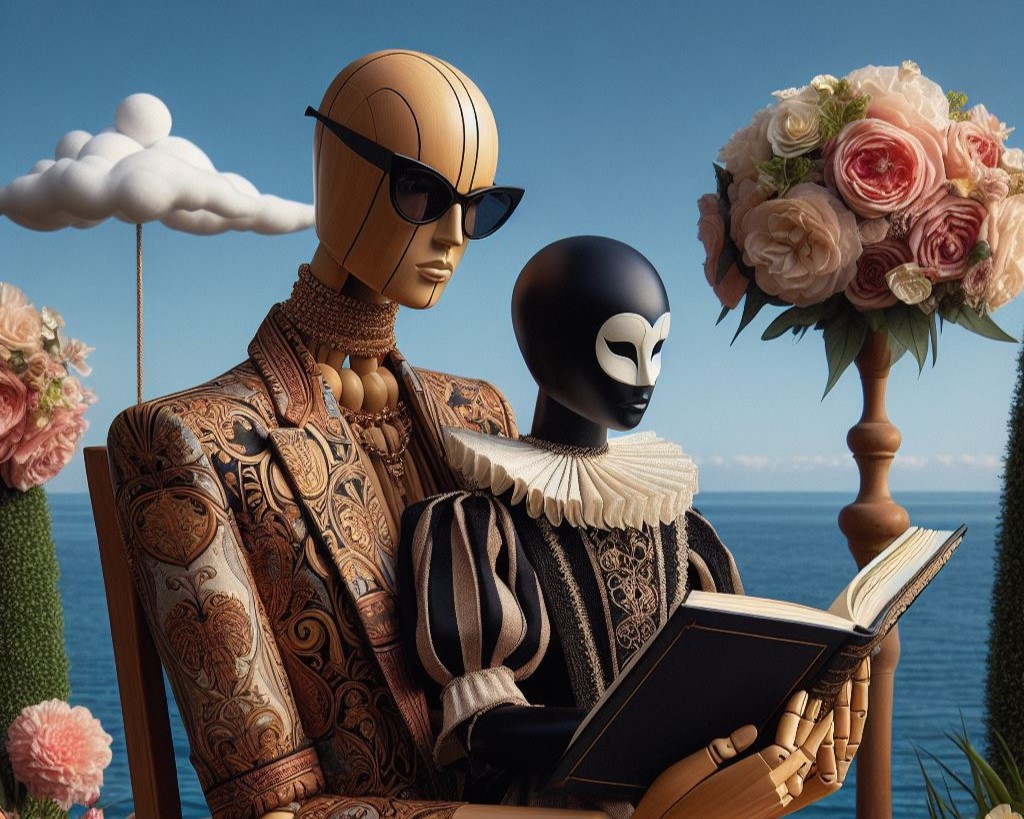


 Raphael, between combining idealized reality, naturalism and refined expressiveness
Raphael, between combining idealized reality, naturalism and refined expressiveness
Located in the hills of the Marche region of Italy, Urbino https://www.italyheaven.co.uk/lemarche/urbino/ is an architectural jewel that played a vital role during the Renaissance. Of this fascinating city you cannot help but appreciate the historic center and the Renaissance walls, still almost intact, which enclose an urban complex of extraordinary homogeneity. Inside, with its elegant facade and frescoed interiors, the Ducal Palace built in the 15th century is one of the architectural jewels of this incredible city nestled on the Montefeltro hills. The cathedral, another example of Renaissance architecture, with its pink and white marble facade is a work of art in itself.



 The Monastery of Santa Chiara https://www.turismo.it/italia/poi/ex-monastero-di-santa-chiara/scheda/urbino/, founded in the 13th century, preserves frescoes and works of art of great value. The Urbinate Renaissance was born and developed under the aegis of Duke Federico da Montefeltro, who governed and transformed the city into a cultural center thanks to the contribution of artists, scholars and mathematicians who gathered at his court. Urbino represents the pinnacle of Renaissance art and architecture, harmoniously adapted to its physical site and its medieval past. In short, your signature trip to this city is an opportunity to discover a treasure trove of history, art and culture that continues to inspire visitors from around the world.
The Monastery of Santa Chiara https://www.turismo.it/italia/poi/ex-monastero-di-santa-chiara/scheda/urbino/, founded in the 13th century, preserves frescoes and works of art of great value. The Urbinate Renaissance was born and developed under the aegis of Duke Federico da Montefeltro, who governed and transformed the city into a cultural center thanks to the contribution of artists, scholars and mathematicians who gathered at his court. Urbino represents the pinnacle of Renaissance art and architecture, harmoniously adapted to its physical site and its medieval past. In short, your signature trip to this city is an opportunity to discover a treasure trove of history, art and culture that continues to inspire visitors from around the world.

 One house in particular will attract your attention, a house transformed into one of the many museums of Urbino, the house where Raphael was born in 1483 https://www.casaraffaello.com/. The first floor, furnished with period furniture, gives the idea of a house-museum. In 1637, that house was purchased by a local architect and finally became the seat of the Raphael Academy. In the main hall, with a wooden coffered ceiling, there are paintings by Raphael’s father; in the other rooms, reproductions of his son’s tables and the kitchen. You won’t forget the bedroom where the painter was born. How can you forget the Madonna of Casa Santi? That Madonna and Child began the series of Madonnas by this Renaissance painter who died very young. Observing a small courtyard with a well, he photographs the stone where the colors of the shop were ground.
One house in particular will attract your attention, a house transformed into one of the many museums of Urbino, the house where Raphael was born in 1483 https://www.casaraffaello.com/. The first floor, furnished with period furniture, gives the idea of a house-museum. In 1637, that house was purchased by a local architect and finally became the seat of the Raphael Academy. In the main hall, with a wooden coffered ceiling, there are paintings by Raphael’s father; in the other rooms, reproductions of his son’s tables and the kitchen. You won’t forget the bedroom where the painter was born. How can you forget the Madonna of Casa Santi? That Madonna and Child began the series of Madonnas by this Renaissance painter who died very young. Observing a small courtyard with a well, he photographs the stone where the colors of the shop were ground.

 The Madonna of Casa Santi https://www.youtube.com/watch?v=9liZnwTzFLk, one of the very first works assigned to the artist Raffaello Sanzio, was even reproduced in a series of commemorative stamps. Frescoed in the room where Raphael is believed to have been born, that fresco was long believed to be the work of Raphael’s father. Observe Mary, sitting in profile in a niche, with the sleeping Child on her lap. Look, marvel at the tenderness of that embrace. She is represented knee-deep, reading a book placed on a lectern. The shadow in her niche highlights her profile. The rarefied atmosphere, the clear and clear colors, the attention to light, are the same ones that inspired all the artists who circulated at the Urbino court. When you leave Casa Santi, we are certain that you too will retain the memory of the intimacy existing between mother and son.
The Madonna of Casa Santi https://www.youtube.com/watch?v=9liZnwTzFLk, one of the very first works assigned to the artist Raffaello Sanzio, was even reproduced in a series of commemorative stamps. Frescoed in the room where Raphael is believed to have been born, that fresco was long believed to be the work of Raphael’s father. Observe Mary, sitting in profile in a niche, with the sleeping Child on her lap. Look, marvel at the tenderness of that embrace. She is represented knee-deep, reading a book placed on a lectern. The shadow in her niche highlights her profile. The rarefied atmosphere, the clear and clear colors, the attention to light, are the same ones that inspired all the artists who circulated at the Urbino court. When you leave Casa Santi, we are certain that you too will retain the memory of the intimacy existing between mother and son.

 The Madonna of Casa Santi, the first known work by Raffaello Sanzio, can be an opportunity to visit other Italian cities and learn about the stylistic evolution of this very famous painter. In Perugia, the chapel of San Severo is a small museum dedicated to the fresco of the Trinity and saints, a fresco completed by Perugino after Raphael’s abandonment and death. In Rome, however, part of the cycle of frescoes on the vault of the Stanza della Segnatura, Primo moto is a fresco that is part of the decoration of the vault of the Stanza della Segnatura in the Vatican Museums. Preserved in the Villa Farnesina in Rome, the Triumph of Galatea is one of the most important frescoes by this painter from Urbino. In the Roman Basilica of Sant’Agostino in Campo Marzio, however, you can admire the fresco of the Prophet Isaiah. Sibyls and angels, a fresco by Raffaello Sanzio, dating back to 1514, you can admire it in the basilica of Santa Maria della Pace in Rome. Creation of Adam and Eve, part of the Banner of the Holy Trinity, awaits you in the Municipal Art Gallery of Città di Castello. The Madonna of Pasadena https://www.nortonsimon.org/, an oil on panel painting by Raffaello Sanzio, is preserved in the Norton Simon Museum of Art in Pasadena.
The Madonna of Casa Santi, the first known work by Raffaello Sanzio, can be an opportunity to visit other Italian cities and learn about the stylistic evolution of this very famous painter. In Perugia, the chapel of San Severo is a small museum dedicated to the fresco of the Trinity and saints, a fresco completed by Perugino after Raphael’s abandonment and death. In Rome, however, part of the cycle of frescoes on the vault of the Stanza della Segnatura, Primo moto is a fresco that is part of the decoration of the vault of the Stanza della Segnatura in the Vatican Museums. Preserved in the Villa Farnesina in Rome, the Triumph of Galatea is one of the most important frescoes by this painter from Urbino. In the Roman Basilica of Sant’Agostino in Campo Marzio, however, you can admire the fresco of the Prophet Isaiah. Sibyls and angels, a fresco by Raffaello Sanzio, dating back to 1514, you can admire it in the basilica of Santa Maria della Pace in Rome. Creation of Adam and Eve, part of the Banner of the Holy Trinity, awaits you in the Municipal Art Gallery of Città di Castello. The Madonna of Pasadena https://www.nortonsimon.org/, an oil on panel painting by Raffaello Sanzio, is preserved in the Norton Simon Museum of Art in Pasadena.

 This renowned Italian Renaissance painter, Raphael, has his own painting style characterized by a perfect harmony between man, nature and history. As regards compositional balance and formal perfection, the artist placed the idea of beauty, compositional balance and formal perfection at the center of his works, effortlessly, almost like a natural gift. Raphael studied the works of Leonardo da Vinci and Michelangelo. His art combined an idealized reality with spontaneous naturalism and refined expressiveness. This balance between idealization and realism is evident in his paintings. His painting became a model for the courts of Europe, and his elegance and brilliant intelligence made him a perfect court gentleman. In short, Raffaello Sanzio left an indelible mark on the imagination of those who were able to closely observe his masterpieces.
This renowned Italian Renaissance painter, Raphael, has his own painting style characterized by a perfect harmony between man, nature and history. As regards compositional balance and formal perfection, the artist placed the idea of beauty, compositional balance and formal perfection at the center of his works, effortlessly, almost like a natural gift. Raphael studied the works of Leonardo da Vinci and Michelangelo. His art combined an idealized reality with spontaneous naturalism and refined expressiveness. This balance between idealization and realism is evident in his paintings. His painting became a model for the courts of Europe, and his elegance and brilliant intelligence made him a perfect court gentleman. In short, Raffaello Sanzio left an indelible mark on the imagination of those who were able to closely observe his masterpieces.

 Returning home, photographs or reproductions of his works may not fill the sense of nostalgia for Italy, Urbino and Raphael. So, we wanted to create some for you with digital art https://www.eden-gallery.com/news/what-is-digital-art which is even inspired by the room where he was born. The intellectual properties of the images that appear on this blog correspond to their authors. The only purpose of this site is to spread the knowledge of these creative people, allowing others to appreciate the works. If you want to know our author travel already published, you can type http://meetingbenches.com/category/author_travels/.
Returning home, photographs or reproductions of his works may not fill the sense of nostalgia for Italy, Urbino and Raphael. So, we wanted to create some for you with digital art https://www.eden-gallery.com/news/what-is-digital-art which is even inspired by the room where he was born. The intellectual properties of the images that appear on this blog correspond to their authors. The only purpose of this site is to spread the knowledge of these creative people, allowing others to appreciate the works. If you want to know our author travel already published, you can type http://meetingbenches.com/category/author_travels/.





